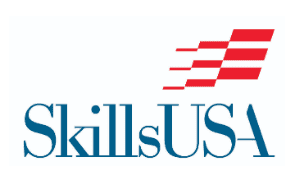This MBCC Program is currently housed in the Edsel Ford and Fordson shops.
Program Instructors:
Derek Clark (Edsel Ford) clarkd@dearbornschools.org
Jamie Nack (Fordson) nackj@dearbornschools.org


This program prepares students for careers in the residential and commercial construction industries. Unique to this program is the integration of the geometry class into the shop projects (and vice versa) to gain a deeper understanding of the use of mathematics and geometry in the workplace. Knowledge and classroom skills will include the building, inspection and maintenance of structures and related properties including carpentry; electrical and power transmission installation; building/construction finishing; project management and inspection; layout, cutting, fabrication, installation and repair of wooden structures using power and hand tools, framing materials and selection, job estimation, blueprint reading, roughing in, finish carpentry, mathematics and measurement and industry codes and standards. Detailed Course Descriptions follow:

WOOD TECH 1 Academy of Industry, Technology & Innovation
This one-semester, one-hour block course is taught at each high school. Wood Technology 1 is an introduction to materials, tools, machines and the procedures involved in the processing of materials used in industrial technology. Employment, safety procedures, measurement, design, hand tool usage, basic machinery, finishing and environmental concerns will be the focus of the course. Course instruction will center on materials and processes involved in product design and product manufacturing. Students will master trade-specific math skills as well as complete and exploration of career opportunities in the skilled trades Students are encouraged to join and compete in SkillsUSA.
WOOD TECH 2 Academy of Industry, Technology & Innovation
This one-semester, one-hour block course is taught at each high school. Wood Technology 2 will emphasize occupations, safety, hand tools, hand power tools, machines, design, problem solving and environmental concerns. Exercises in gross and fine motor skills will be performed as projects become more challenging. Students will solve math and geometry problems. Science topics will be covered as they relate to material processing. Students are encouraged to join and compete in SkillsUSA.
GEOMETRY IN CONSTRUCTION 1, 2 Academy of Industry, Technology & Innovation
This full-year, one-hour block course is taught at each high school. Students will be enrolled in a matching section of Geometry C. Students will be introduced to problem solving, machine and tool use, safety, drawing interpretation, and basic building techniques in relation to the construction and building trades. Students will be exposed to and exploit the interdependence between algebra and geometry. The integration of math and construction will strengthen student’s math skills applying theoretical math concepts to practical building projects. The course will continue emphasizing student problem solving, math integration, machine and tool use, and safety. Students will also be exposed to elements of green building technology, heavy equipment, civil engineering, and advanced construction business management techniques Student learning will also be extended through the introduction of advance building techniques, culminating in an advanced project build. Students are encouraged to join and compete in SkillsUSA. (Prerequisite: Wood Tech 1, 2)
GEOMETRY (Taken concurrently with Geometry in Construction)
This full-year, one-hour block course is taught at each high school. Students will be enrolled in a matching section of Geometry in Construction. Students will apply their knowledge of Geometry (including Algebra II SAT Prep Materials) in the Construction Lab. Geometry students examine the properties of 2-and 3-dimensional objects. Proof and logic, as well as investigative strategies in drawing conclusions, are stressed. Properties and relationships of geometric objects include the study of: (1) points, lines, angles and planes; (2) polygons, with special focus on quadrilaterals, triangles, right triangles; (3) circles; and (4) polyhedra and other solids.



